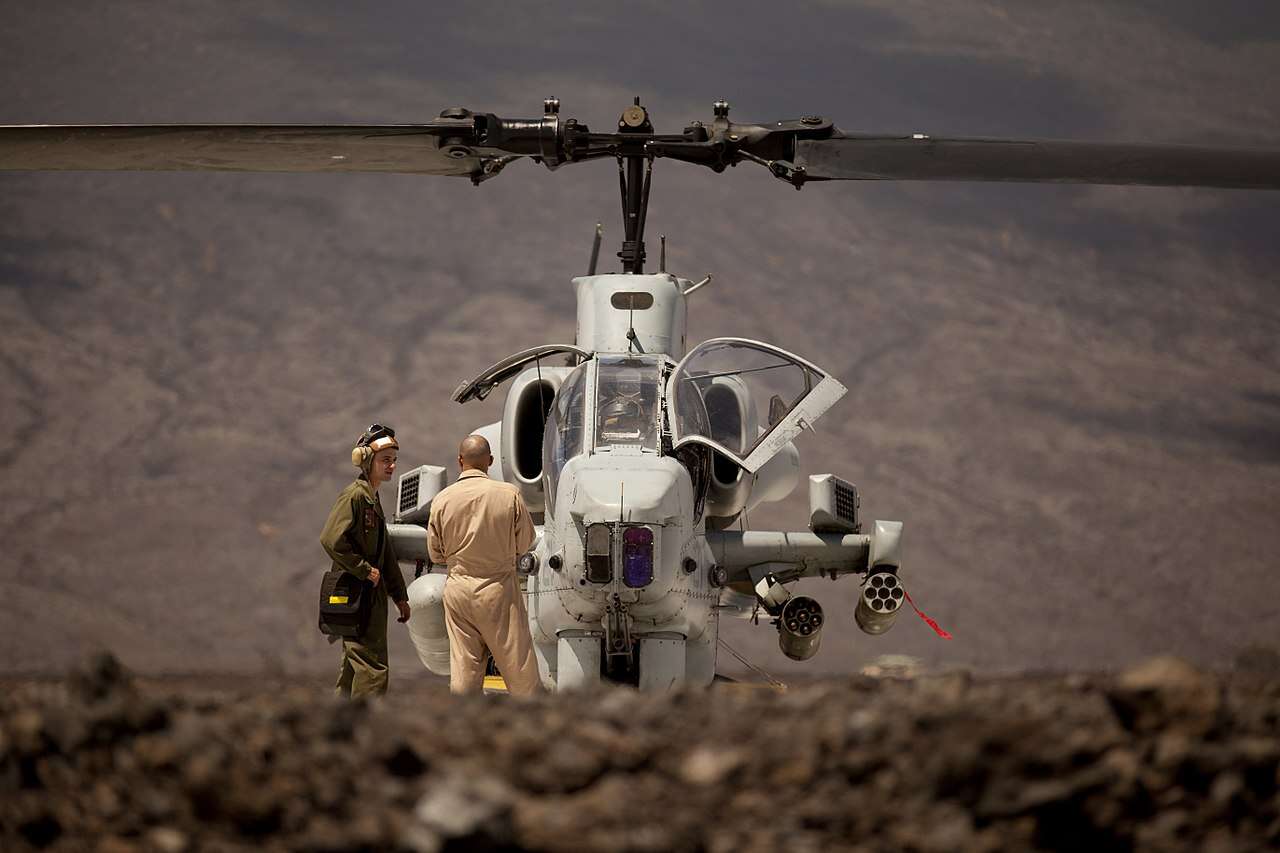Tässä tst-koptereista asiaa eli juttua AH-1W Super Cobrien myynnistä:
Pentagon To Sell-Off Its AH-1W Super Cobra Attack Helicopter Fleet
The still very relevant and capable "Whiskey Cobras" are certain to be very sought after weapons once they hit the market.
By Tyler RogowayJanuary 19, 2018
The Department of Defense plans on putting its surplus fleet of AH-1W Super Cobras up for sale on the international arms market. The news comes as the USMC continues to outfit its light attack helicopter squadrons with new-build
AH-1Z "Viper" derivatives of the Bell design, which traces its roots directly to the iconic UH-1 Iroquois/Huey.
A recent business opportunity posting
over at Fedbizops.gov describes the need for flight and maintenance training, sustainment, and refitting "Whisky Cobras" with new commercially available off-the-shelf avionics upgrades in preparation for foreign transfers of the type which will begin this year. The idea being that a foreign power can purchase the airframes and have them kitted out as they see fit, and also have available contractor support to make the sale a "turn-key" operation. An industry day is planned for January 24th for any companies that are looking to support the initiative with their services and products.

The AH-1W's cockpit is antiquated by today's standards, incorporating "steam" gauges, optical targeting scopes, and even a heads up display (HUD) for the pilot that looks like it was ripped out of a light fighter from the 1980s. But even though their system may not be cutting-edge, the aircraft remain brutally effective at their job. A new "glass" cockpit would only substantially increase their lethality. The posting also states that any new cockpit configurations will have to work with the aircraft's existing weapons fit.
The U.S. Army previously liquidated its fleet of less capable single-engine AH-1 models that were pulled from service in the early 2000s, a process that ended in 2010.
Originally the AH-1Z program intended to remanufacture all but 58 of the 226 AH-1Zs it was slated to acquire from existing AH-1W airframes, but that changed quickly as the program gained momentum. The price difference between new-build and remanufactured helicopters shrunk dramatically, so it really didn't make sense to go through all the effort and logistics of reusing older AH-1W airframes that also still held value.
In the end only 37 AH-1Ws were reworked into AH-1Zs, and that effort ended in 2014. As such, there is a large fleet of Whisky Cobras that could potentially be sold off as surplus to a foreign buyer, or donated via foreign military aid initiatives. Of course any sale, or gift for that matter, would have to be approved by the U.S. State Department.
Surplus AH-1Ws hitting the market will join nearly as many OH-58D Kiowa Warrior armed scout helicopters which are also being exported as surplus after the Army
controversially retired the type last year—both to the chagrin of attack and scout helicopter manufacturers who see flooding the market with affordable used airframes as detrimental to their business prospects. But the cobras will likely prove even more attractive than the Kiowa Warriors due to their more potent combat capabilities and more powerful twin-engine design.
The existence of relatively cheap and upgradable Whisky Cobras could even hurt Bell's
looming export success of the UH-1Y/AH-1Z family of helicopters. Cash-strapped Eastern European militaries who are seeking to add the next generation Huey family to their inventories could move toward acquiring upgraded AH-1W for at least part of their attack helicopter needs. Smaller countries, like the Baltic States, could even acquire these helicopters to dramatically build up their anti-armor defenses against a potential Russian incursion.
Where the AH-1Ws will likely get a lot of interest is from countries that are facing increasing internal threats from extremist forces or are experiencing major instability along their borders. Countries like Jordan have already benefitted from second-hand Cobras to help protect its borders from extremist infiltration. The issue is so strategically important that
Israel gifted Jordan a number of surplus single engine Cobras in recent years to help satisfy this particular mission set.
The type could also come in handy in places like the Philippines, where precision air support in urban areas is
becoming a major factor in the country's ability to beat back ISIS aligned forces. AH-1Ws could even find a place in Africa. Nigeria in particular showed interest in acquiring surplus attack helicopters from the U.S. but was turned down in the past. This could change under the Trump Administration. Tunisia is another possible taker.
The AH-1W descends directly from the Sea Cobra, and was originally designed with deploying aboard amphibious assault ships in mind. Considering the boom in
helicopter carrier acquisition around the globe in recent years, the AH-1Ws could be a very attractive and cost effective option for outfitting these ships with a hard-hitting, multi-role attack capability. For instance, Thailand could purchase a squadron for its aircraft carrier the
HTMS Chakri Naruebet, a ship that lost its Harrier force a decade ago and could use Cobras to help bring back some of its offensive punch. Brazil,
which is getting the Royal Navy's
HMS Ocean, could also purchase surplus USMC Cobras to give the ship's future air wing some serious bite. Doing so would also help to compensate for the fact that country's only fixed-wing carrier
will never sail again.
The list goes on and on, but clearly we can expect these aircraft to be relatively hot commodities in the coming months. It's also worth mentioning the possibility that these aircraft could be utilized by Iraq and Afghanistan, the latter of which still depends on Russian-built gunships, although armed Black Hawks are part of the
questionable transition plan over to American made rotary-wing assets.
The Cobra, even without any upgrades, is well adapted to operating in austere environments and is simple to maintain compared to many of its more complex international counterparts. It can also deploy the TOW missile in combat, which is both economical and well suited for counter-insurgency operations. With all this in mind, the Whisky Cobra could give Afghanistan an injection of precision air support it desperately needs, and without costing the American taxpayer huge sums of money.
Who knows, a handful of the aircraft could even find their way into mercenary hands, at least that was the founder of Blackwater International's plan when he pitched
taking over the air war in Afghanistan from the DoD.
The old adage "one man's trash is another man's treasure" couldn't be more accurate when it comes to the worldwide arms market, with unwanted American equipment being highly attractive to countries in decent standing with Washington. But these Cobras are an especially relevant opportunity, and considering the Trump Administration's more laissez-faire approach to arms exports, it will be very interesting to see who grabs for them first.
The USMC's transition from AH-1W to AH-1Z should be complete sometime in 2020.
http://www.thedrive.com/the-war-zon...its-ah-1w-super-cobra-attack-helicopter-fleet







